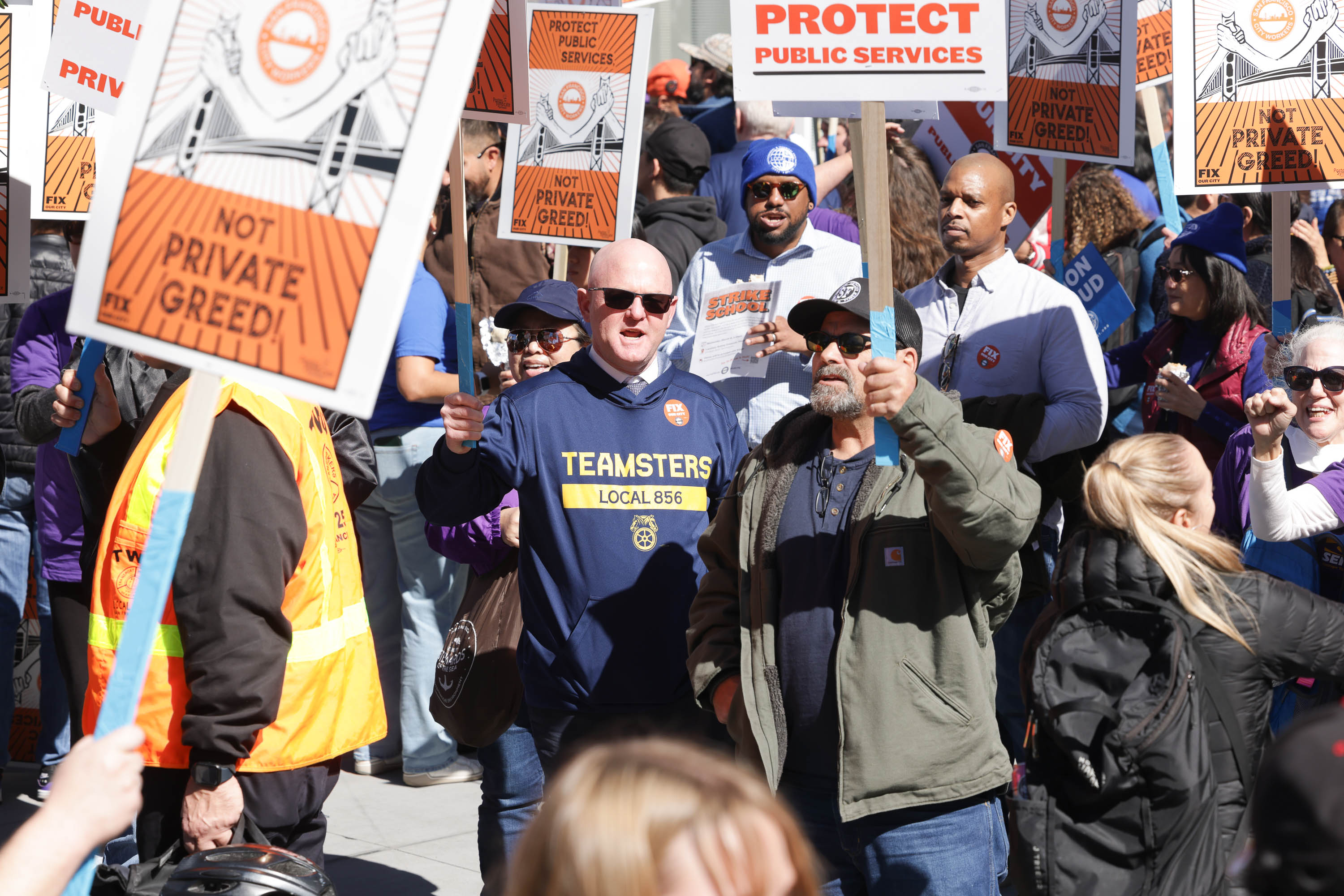The unions representing San Francisco’s city workers rallied Tuesday to cry foul over the billions of dollars the city spends on outside contractors each year. They say some contractors charge up to $300 an hour for workers, sometimes more than doubling the cost of hiring someone in-house, and that the city would be better off hiring more employees to alleviate its yearslong staffing crisis.
“Why not give that work to us and save the taxpayer?” San Francisco Department of Public Works Junior Engineer Jon Gausman said. “We’re not even staffed up. We could be bringing more people in.”
Pushing San Francisco away from its longtime reliance on outside contractors has become a focal point for the coalition of 12 unions, representing over 25,000 city workers, that are in the midst of a contentious contract negotiation with city leaders. The specter of a widespread strike has hung over the city since the unions launched their contract fight last month and may become a central sticking point in Mayor London Breed’s bid to win reelection in November.
A June 2023 civil grand jury report found that the number of vacancies in the city more than doubled since the Covid pandemic began, causing Muni to run fewer buses, reducing the level of care in local hospitals and jacking up answering times in the 911 call center. City worker unions proposed in their bargaining with the city that San Francisco achieve full staffing in key services by 2025, improve hiring processes based on the grand jury report and balance the upcoming budget by reducing contracting, not cutting vacant positions, according to coalition spokesperson Luke Thibault.
There are currently 3,200 vacant full-time jobs in San Francisco, according to Department of Human Resources spokesperson Jack Hebb. That total represents a lessening of the vacancy crisis, according to Hebb, who said the city’s vacancy rate declined by nearly 30% from January 2023 to January 2024.
At the beginning of 2023, the city had 34,500 full-time equivalent employees. Over the next year, the city hired 10,260 employees, while 9,560 employees stopped working for the city during that time. So by January 2024, the city had more than beat out attrition and increased its workforce by 700 full-time equivalent employees. That total city staff of 35,200 is the highest it’s ever been, Hebb added.
San Francisco began contracts worth an average of about $6.7 billion each year from 2018 to 2023, according to its supplier contracts database. That’s about the same amount—$6.7 billion—that the city budgeted to spend on personnel wages and benefits during the current fiscal year, which ends in June.
There’s nothing inherently bad about cities contracting services out to third parties, according to John Pelissero, the director of government ethics at Santa Clara University’s Markkula Center. The movement toward contracting out work began in the 1970s, and research has shown that third parties can provide more efficient services in some cases and help cities and their taxpayers save money on payroll and post-retirement benefits, such as pensions, he said.
The union coalition, however, argues that the city is actually overpaying on major contracts. In a report released Tuesday, it pointed to the city’s 10-year, $90 million contract with a private company called AECOM to work on the sewer system. In the contract’s fee schedule, AECOM said it planned to bill up to $300 per hour for some of its employees. That includes a built-in fee for the company’s overhead and profit on top of the worker’s salary. AECOM’s hourly rates dwarfed, in many cases, what it would cost to pay a city worker to do the same work, even when factoring in fringe benefits, according to the union.
But a direct wage comparison may be missing the point, according to Pelissero, since cities are more concerned with the overall cost-effectiveness of a proposal as opposed to specific hourly rates.
The Public Utilities Commission, which contracts with AECOM, and the Department of Human Resources did not reply to requests for comment on the hourly fees.
Cost aside, Gausman, a lifelong San Franciscan, said the city should recognize that employees have a larger stake in the results of their work than outside companies.
“A contractor who’s a global entity may not even see it as a big deal, or might not be around in five or 10 years to stand by that work,” Gausman said. City employees, on the other hand, have to live with that work for years to come. “There’s a different kind of sense of ownership over the infrastructure in the city.”
Editor’s note: the story has been updated to clarify the number of employees the city hired between January 2023 and 2024.
